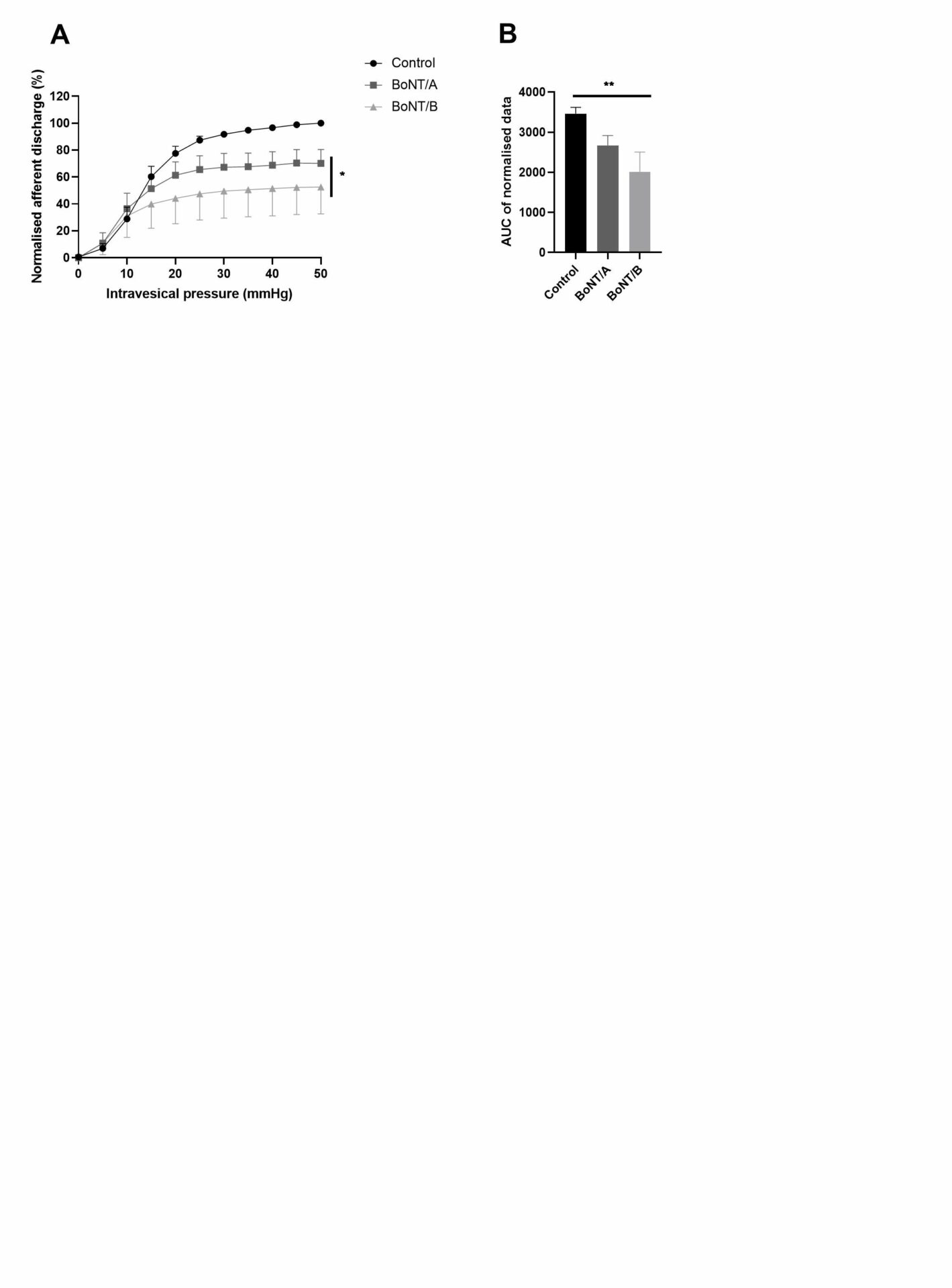Background – Botulinum neurotoxin (BoNT) is a potent neurotoxin that silences cholinergic neurons through inhibition of vesicular release mechanisms. Intravesical injection of BoNT serotype A (BoNT/A) for patients with overactive bladder (OAB) unresponsive to anticholinergics was approved by the Federal Drug Administration (FDA) in 2013 (FDA, 2013). Despite its widespread use, the complete mechanism of action of BoNT/A is still unclear, as reduction of bladder sensation has been described in basic science and clinical literature. Most studies have investigated only BoNT/A. The aim of this study was to use an ex vivo bladder-nerve preparation to investigate the action of BoNT/A and BoNT/B on distension-induced afferent firing.
Methods – These studies were performed using adult C57BL/6J mice between 8 and 12 weeks old, sacrificed in accordance with Schedule 1 of the Animals (Scientific Procedures) Act UK 1986. An ex vivo bladder-nerve assay that allows the concomitant recording of afferent nerve firing and intravesical pressure was used to define the effect of BoNT/A and BoNT/B on bladder afferent mechanosensitivity. Nerve responses at 90 minutes post-BoNT treatment were normalized as a percentage of nerve activity of baseline distension prior to application of BoNT/A and BoNT/B at a concentration of 3 pM, or PBS in time control. All data are presented as mean +/- SEM, analysed using one-way and two-way ANOVA with Bonferroni post hoc test (Figure 1.)
Results – Time control preparations showed no difference in nerve responses, the 90-minute distensions retaining 94.48% (+/- 4.35%) of nerve activity of baseline distension (p=0.3398, n = 11). Figure 1: (A) BoNT/A significantly reduced bladder mechanosensation (p <0.0001; n = 5), responses decreasing by 29.8% (+/- 10.2%) compared to baseline. BoNT/B also significantly attenuated afferent firing (p<0.0001, n = 6), responses decreasing by 47.5 % (+/- 19.9%) compared to baseline. BoNT/B inhibited distension-induced afferent firing more potently than BoNT/A (p <0.05). (B) Afferent responses visualised as Area Under Curve (AUC) shows BoNTs significantly reduced afferent firing compared to control (p=0.006)
Interpretation of results – To our knowledge, this is the first study showing an effect of BoNT/B on bladder afferent nerve signaling. The results suggest that while both BoNT serotypes inhibit bladder mechanosensation, BoNT/B inhibits nerve firing more potently. Further studies are necessary to understand the underlying mechanism behind this effect.
Sensory Signals (The Royal College of Physicians, London, UK) (2022) Proc Physiol Soc 50, C12
Poster Communications: Inhibition of distension-induced afferent firing by Botulinum neurotoxin serotypes A and B in the mouse bladder
Hodan Ibrahim1, Fraser Hornby2, Jacquie Maignel3, Matthew Beard2, Donna Daly1
1University of Central Lancashire, Preston, United Kingdom 2Ipsen Bioinnovation, Abingdon, United Kingdom 3Ipsen Innovation, Les Ulis, France
View other abstracts by:
Where applicable, experiments conform with Society ethical requirements.

